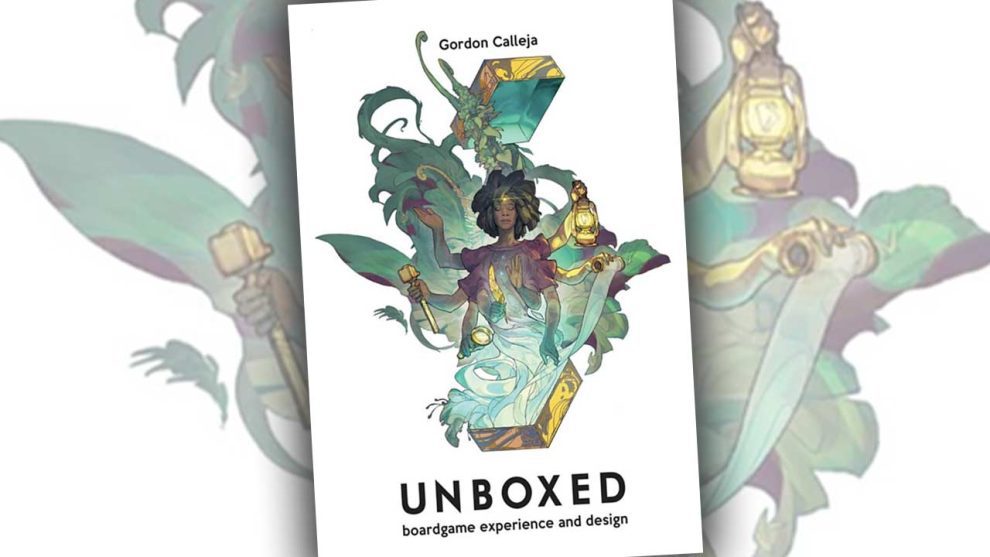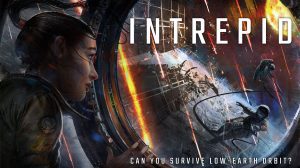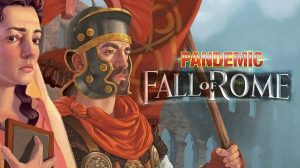Disclosure: Meeple Mountain received a free copy of this product in exchange for an honest, unbiased review. This review is not intended to be an endorsement.
Overview
 Decades ago, while completing my Master’s degree in Fiction Writing, I would spend days in the library getting lost in the academic shelves of literary criticism and essays on craft. I have been designing games since 2016 and am a partner in Uplink Underground Games, publisher of my game Breakaway Football (and its 11 expansions). When I saw Unboxed: Board Game Experience and Design by Gordon Calleja, I recognized the most delightful merging of my passions. I had to review it.
Decades ago, while completing my Master’s degree in Fiction Writing, I would spend days in the library getting lost in the academic shelves of literary criticism and essays on craft. I have been designing games since 2016 and am a partner in Uplink Underground Games, publisher of my game Breakaway Football (and its 11 expansions). When I saw Unboxed: Board Game Experience and Design by Gordon Calleja, I recognized the most delightful merging of my passions. I had to review it.
Unboxed seeks to deconstruct every aspect of a game–its design, the way it demands the player’s attention, the rules, the interactions during play, even the physicality of the product itself–to uncover how the gaming experience is created. While the book is exhaustive in its attention to the theoretical, it balances that purely intellectual pursuit against a rich mosaic of interview questions and answers from rock star game designers, publishers, and reviewers. The result is a thicket of thoughts not easily traversed but certainly worth exploring.
Scope
Each chapter tackles a central focus of the game experience. At first, Calleja explores “delving into the nature of play” to understand how the game interaction is structured. A central focus of the book seems to be establishing a common vocabulary as a foundation for meaningful critique. For example, Calleja spends time comparing players “attention” and “involvement” as a means of parsing terms for greater precision. He does the same when discussing game rules, differentiating them from “mechanics” or “goals.” Finally, Calleja argues the term fiction is a “more accurate and conceptually productive concept than theme.”
After laying out his terminology, Calleja explores why board games are so popular now, which is the central pillar of his book, that board games are worthy of critical study. He explores how the “sociality” of board games induce a ritualistic “togetherness” that is appealing as a counterpoint to digital media, which may explain why board games are having a surge in popularity. Calleja dives deep into how board games tell stories, exploring the difference between “scripted” and “emergent” narrative and how those varied approaches help or hinder “immersion” in the game’s experience.
Calleja even discusses the “materiality” of the product, both the aesthetic or tactile experience of component design and how pragmatic the components are to manipulate, while cautioning readers about frivolous inclusions that take on a “toy element.”
At 288 pages, the book is so chock full of nuance and complexity that it defies even a cursory review of its most salient points. Instead, I will present the questions I had going into the book and offer my best answers so you can decide if this book is for you.
What Does the Book Do Well?

Perhaps most importantly, Unboxed: Board Game Experience and Design by Gordon Calleja establishes a framework of critique (not criticism) for board games. Critique is a critical review or commentary, much like you would see in essays on literature or discussions of fine art. Critique is different from criticism, which is more about judging a work or finding fault with it. Calleja is not criticizing in this book but rather is defining a common language we can use to discuss each facet of the board game experience.
One significant accomplishment is Calleja’s dizzying array of quotes and opinions from an army of high-profile leaders in the board game industry. Interviews with experts in game design, such as Vital Lacerda and Reiner Knizia, publishing greats like Ignacy Trzewiczek, and even board game reviewing personalities like Elaine Bladukienė and Efka Bladukas ground the theoretical discussion with examples, immediacy, and applicability.
Calleja also does a fine job in deconstructing cognitive processes in relation to games, laying bare the components of play, their purpose, and their interconnections. The effect is like analyzing each movement within a single swing of a golf club, making it possible to focus a discussion on one element rather than on a game as a whole.
Lastly, Unboxed clearly states its mission and lays out the structure of its chapters in good detail. Calleja’s organization of the game systems allows easy reference for a curious researcher ready to explore the consolidated thoughts on a narrowly defined topic.
Where Does the Book Struggle?
While reading the book, I did find myself wishing Calleja had approached some of this work differently.
The tone of the book overall is dispassionate. Beyond the preface, wherein Calleja recounts his own board game design origin story, and later a particularly surprising depiction of his dislike for Wingspan, the rest of the book reads as overly strained and reserved.
The word that leapt to mind as I read was “esoteric.” The book seems to appeal to a hyper specific and potentially limited subset of readers.
And while there are numerous examples of published board game designs that illustrate a given topic, any conclusions and hypotheses that Calleja might draw seem buried in the body of the expert interviews. I would have preferred an “at a glance” section in each chapter with key takeaways for each topic, especially considering the book appears to be primarily a reference tool.
I suppose the decision Calleja has made is to let the experts do the talking, and I can appreciate how that might lend credibility to the work. However, I longed for clever summations that would help me apply the new vocabulary, new systems, and new tools to my appreciation of published games or even as a mirror to understanding my own game design work. I am sure the information is all there somewhere, which I hope will leap out at me in subsequent readings. I just wish it were easier to locate key concepts quickly, like a more overt use of infographics to illustrate main points, a dictionary of board game terms, or a compendium of ideas on design theory.
Who is the Book’s Target Audience?
The book seems targeted at academic peers, such as a researcher or college student who wants a one-stop reference guide to modern board game theories of play. The plethora of interview quotations from notable designers and publishers makes this book a perfect source for citations and pull quotes to use in an academic paper. All disciplines have seminal works of foundational reference. My favorite in Shakespearean literary criticism is the works of A.C. Bradley on the Tragedies and the five-act structure. I can imagine Unboxed: Board Game Experience and Design encouraging future research, providing a common lexicon for the next generation of academics.
The book also works for professional tabletop game designers, specifically those who want to continually improve the quality of their craft. Books like Unboxed and The Building Blocks of Tabletop Game Design are expanding the scope of critical discussions on board game design.
Beyond those specific audiences, though, I surmise the academic language, the dryness of certain topics, and the paucity of visual references will conspire to keep the book at arm’s length for many readers.
How Can I Use This Book?
Because of the book’s style and structure, I suggest approaching it as a reference guide, like an old school encyclopedia or dictionary. Calleja clearly sets out to catalog a variety of opinions of notable experts in the field, and I believe he has succeeded in that attempt. As a tome of knowledge collected from many of the heavy hitters in our industry, Unboxed: Board Game Experience and Design is an invaluable time capsule of what the brightest minds in our industry are thinking right now about the work they love so much.
Consider also using the book as a catalog of components of play. If you are a board game designer, consider using the book to stress test your emerging designs. For example, you could use play testing to spot where your in-progress design is weak, then dive into the chapter that explores that topic to spark your imagination on potential improvements.
Is This Book For Me?
If you appreciate academic discourse, enjoy analysis, and get lost in focusing on how systems function, this book is 100% for you. I am in that category, so I was pleased to read it. I suspect this is a book I will read again, not sequentially but rather topic by topic, for many years.
If you design tabletop games and want to push yourself to get better, largely through exploring the intersection of ideas by industry experts like Richard Garfield, or spotting trends in the thinking of Rob Daviau or Emerson Matsuuchi, or examining your in-progress work against the opinions of Cole Wehrle or Geoff Engelstein, this book is 75% for you. Certain sections you will want to skip, and Calleja kindly identifies what you can skip and where you can turn to find the topic you seek.
If you want examples of critical successes from the tabletop game industry, this book is only 25% for you. The quotes from notable designers and publishers are a nice touch, but you will likely have to dig a lot to find a few helpful nuggets.
If you are new to games and want to learn how to start designing your own, I do not recommend this book. Unboxed: Board Game Experience and Design is too advanced for a beginner. In my opinion, there are many more approachable (and free) resources that will not overwhelm you with theoretical complexity, such as the Ludology podcast, Board Game Design Lab podcast, and The Dice Tower’s older but still relevant Board Game University podcast. These free resources offer 6-12 months of consumable content that can accelerate your knowledge of tabletop game design and development.
Final Thoughts
I wholeheartedly commend Gordon Calleja for his years of work and staggering consolidation of resources. Clearly a ton of labor went into this book, and that by itself should be praised and admired. This book is absolutely worth publishing, if only to lay the groundwork for more research and critique in this emerging discipline.
By taking such a deep dive into the systems of play, Calleja seems to be making the case that board games, once just a humble commodity, have now been elevated to an art form worthy of analysis and study. I hope Calleja’s book will encourage a generation of new scholars to look seriously at tabletop game design.












Add Comment